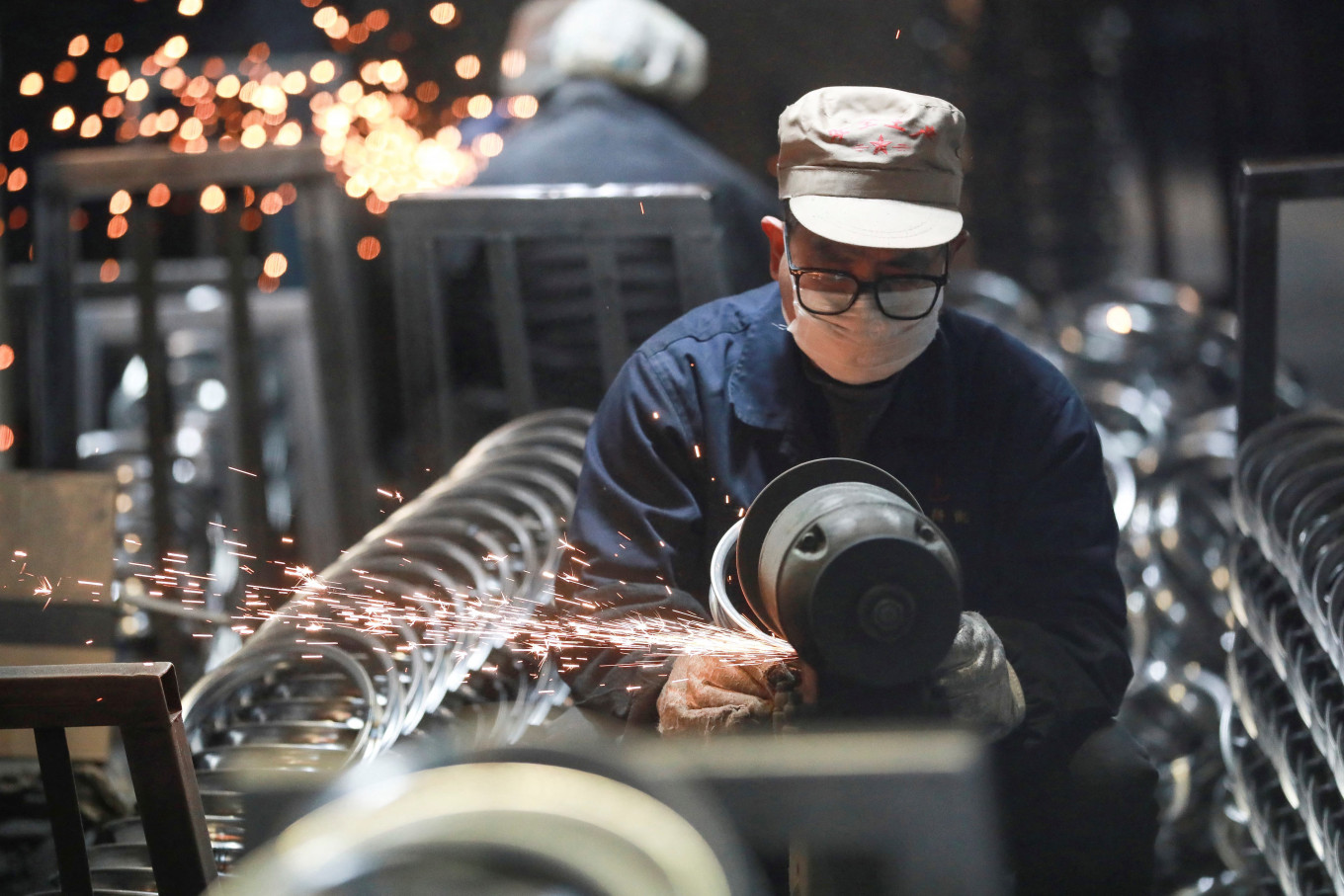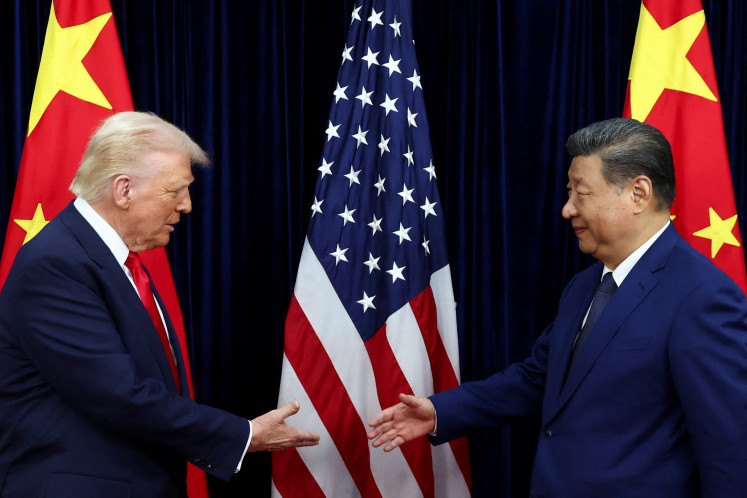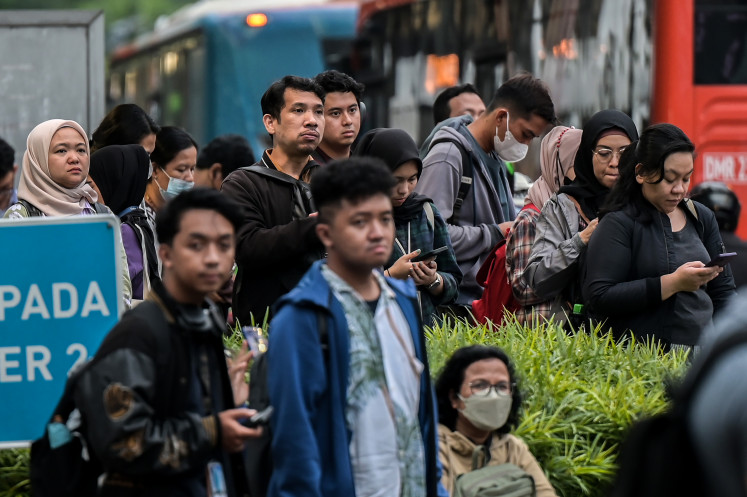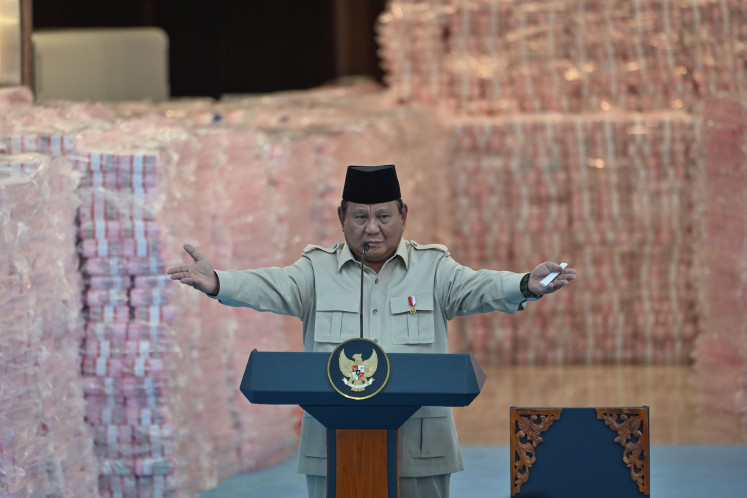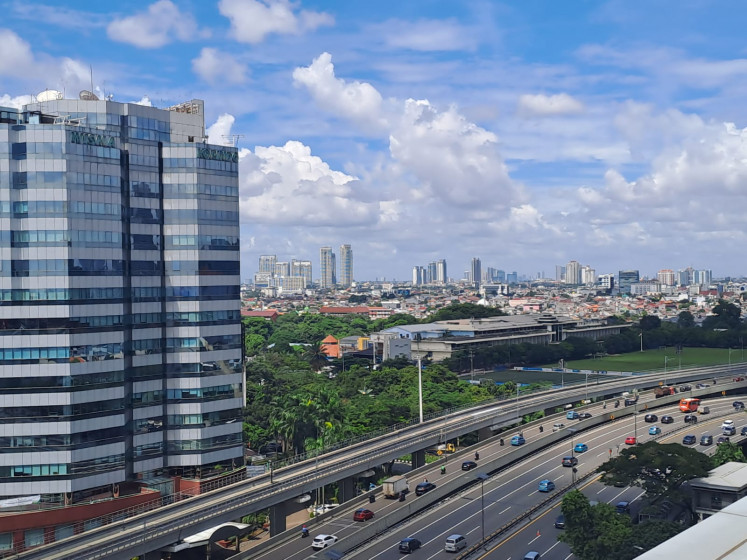Popular Reads
Top Results
Can't find what you're looking for?
View all search resultsPopular Reads
Top Results
Can't find what you're looking for?
View all search resultsAs US threatens tariffs and builds walls, China opens up
China is consolidating its position as the world’s manufacturing and technological innovation hub by increasing trade with the Global South.
Change text size
Gift Premium Articles
to Anyone
T
he United States is threatening to impose tariffs on its major trading partners. In the meantime, China is consolidating its position as the world’s manufacturing and technological innovation hub by increasing trade with the Global South.
If the US role in globalization has been to consume the world’s products and resources by building on a foundation of ever-increasing debt, China’s has been to make tangible goods for the international market.
China is opening up its economy, especially to the nations of the Global South.
Effective December 2024, China eliminated all tariffs on goods from the least developed countries. Chinese Premier Li Quang has also described China as an economic opportunity for global investment.
China’s trade surplus with the rest of the world is almost US$1 trillion dollars. Its share of global exports was 14 percent in 2023, compared with 8.5 percent for the US
China is working with regional states to make itself the center of Asian trade. China’s Belt and Road Initiative is funding infrastructure in about 150 countries as Chinese companies invest internationally, both to avoid US tariffs and diversify their markets.
At the moment, China accounts for 35 percent of the world’s manufacturing. By 2030, the United Nations projects this will rise to 45 percent.
China has achieved this status by building efficient, high-quality infrastructure.
It has also fostered highly competitive and innovative technological and commercial ecosystems. The recent emergence of DeepSeek, a Chinese artificial intelligence start-up that is dramatically disrupting the sector, illustrates this reality.
China also controls global industrial supply chains in a host of critical areas.
Despite its ongoing economic slowdown, China’s economy grew by almost 5 percent in 2024 and has potential to grow further as it transitions to a high-tech economy.
By 2030, the country will have what is known as a consuming class of 1.1 billion people, making it the world’s largest consumer market.
Only 7.8 percent of the population has the equivalent of a bachelor’s degree, but China produces about 65 percent of science, technology, engineering and mathematics (STEM) graduates globally on an annual basis.
China is also leading the world in most new technologies and industries, but there is room for infrastructure investment in smaller cities and rural areas. Because China is a global leader in using automation and AI, it will also need to lead in managing these technologies’ social and economic effects.
China has economies of scale that no other country, except India, can match. Its manufacturing dominance is the logical outcome of introducing an increasingly technologically sophisticated country with a vast population to the modern global system.
The first Donald Trump administration used tariffs to try to draw investment into the US and stimulate domestic industry. He believed tariffs would create more manufacturing jobs, shrink the federal deficit and lower food prices.
The second Trump administration has returned to tariffs, again with the goal of pulling jobs and investment from other countries into the US
Trump has threatened to slap tariffs on Canada, Mexico and the European Union.
He has already put 25 percent tariffs on all steel and aluminum imports into the US and imposed additional 10 percent tariffs on all Chinese goods. He is also threatening tariffs on Taiwan, attempting to strip it of its semiconductor industry.
Trump is basically demanding that other countries address trade imbalances by buying more expensive American exports in exchange for unimpeded access to the US market.
He is trying to recreate a US industrial dominance that existed only under unique circumstances after World War II. Similarly, the historical circumstances that led to China’s decline in the 19th and 20th centuries are long past.
To compete with China’s advantages, the US needs a competent and effective government capable of long-term planning. Under Trump, the US is losing this already-weak capacity every day.
The US is the world’s largest consumer economy because both the government and Americans go into extraordinary debt to finance their consumption.
Currently, the US national debt is more than $36 trillion while consumer debt was $17.5 trillion in 2024.
The US can accumulate enormous debt because of the US dollar’s status as the world reserve currency. But the US has weaponized the dollar by freezing the dollar assets of sovereign states and using the dollar’s reserve status to apply US laws and sanctions beyond its borders.
This has created a major push, led by the BRICS countries of Brazil, China, Egypt, Ethiopia, India, Indonesia, Iran, Russia, South Africa and the United Arab Emirates, to replace the US dollar with other financial instruments.
In response, Trump has threatened 100 percent tariffs on any countries that try to drop the US dollar.
The US economy has grown through pumping up asset bubbles, but there has been a decline in most measures of social well-being in the US. This aligns with increasing US social, political and economic instability.
China’s exports to the Global South exceed its exports to the western world. Chinese companies and products are dominant in Asia, Africa and Latin America.
To the Global South, there are clear benefits to accessing affordable, high-quality technology and industrial products from China. The industrialized world can also benefit significantly from Chinese manufacturers, but possibly at the cost of its own established industrial capacity.
While some states may block Chinese imports to protect their industries, China’s increasing manufacturing dominance means that every country will need at least some Chinese products to develop or to sustain industry. It would be next to impossible for most countries to definitively cut all trade with China.
The world is entering a new era of globalization. For many states, that means trying to keep from being economically undermined by the US while deciding how to manage the economic and political costs and benefits of engaging with China’s massive industrial capabilities.
---
The writer is a professor of international relations and political science at St. Thomas University. The article is republished under a Creative Commons license.

